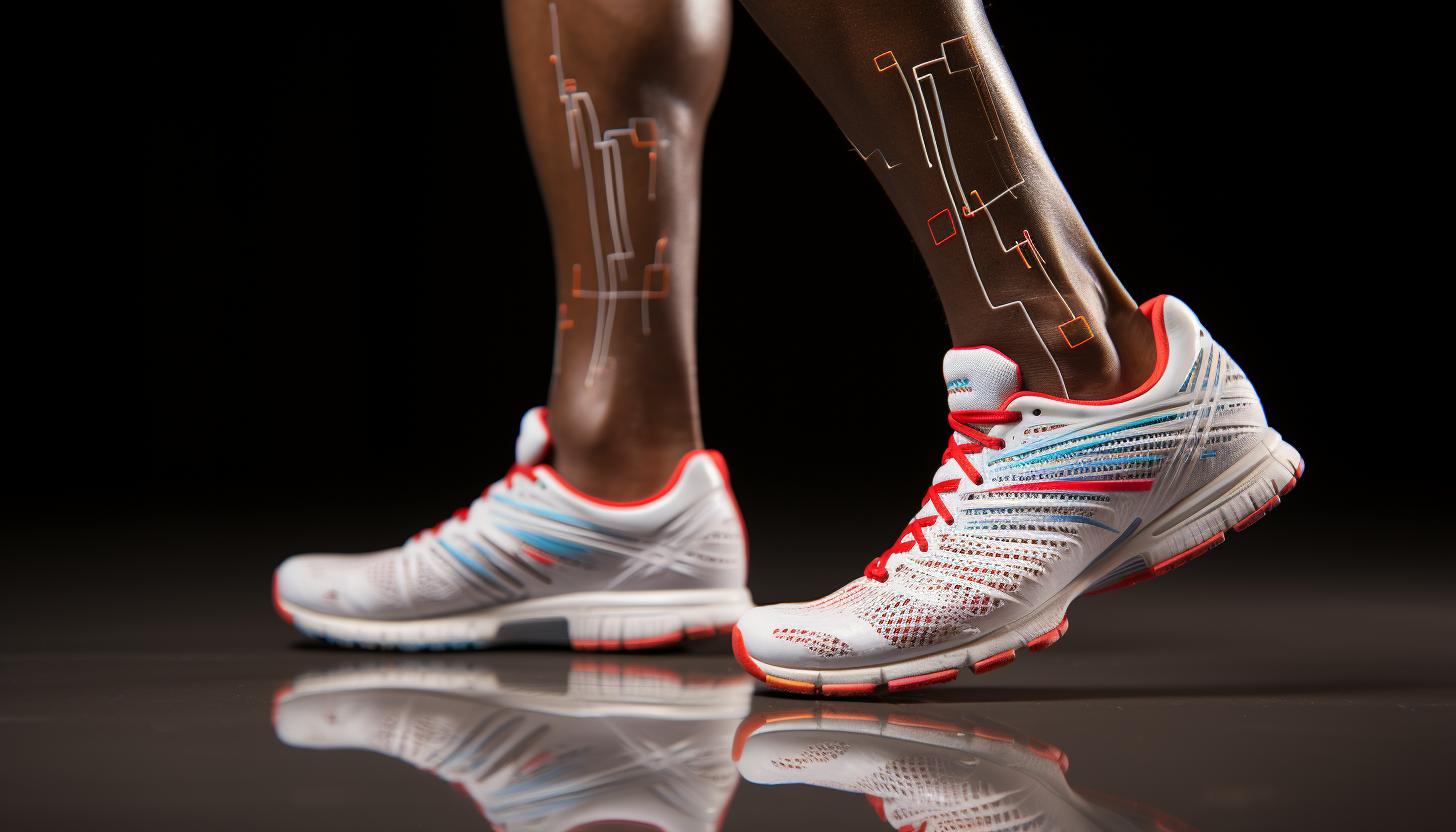The Importance of Proper Form and Technique in Injury-Free Running

Imagine yourself sprinting effortlessly through the finish line, your body aligned perfectly, every muscle working in harmony.
Running with proper form and technique is not just about aesthetics; it plays a vital role in injury prevention. By understanding the impact of footstrike on running mechanics, building core strength to maintain proper form, and mastering breathing techniques for optimal performance, you can avoid common mistakes that hinder your progress.
In this article, we will explore the importance of proper form and technique in injury-free running and provide evidence-based strategies to help you achieve your running goals.
The Role of Body Alignment in Injury Prevention

To prevent injuries while running, you need to focus on maintaining proper body alignment. Posture correction plays a crucial role in injury prevention and can greatly reduce the risk of common running-related injuries. When your body is properly aligned, it allows for efficient movement and minimizes stress on your joints and muscles.
One key aspect of posture correction is maintaining a neutral spine. This means keeping your head, neck, and back in alignment while running. Avoid slouching or arching your back excessively as these can lead to imbalances and increase the likelihood of injury.
Another important factor to consider is shoe selection. Wearing the right shoes can significantly improve your body alignment during running. Choose shoes that provide proper support and cushioning for your specific foot type and gait pattern. A professional fitting at a specialty running store can help you find the perfect pair.
Remember, maintaining proper body alignment requires conscious effort and practice. Regularly incorporating exercises that strengthen core muscles and promote good posture can also contribute to injury prevention while running.
Understanding the Impact of Footstrike on Running Mechanics

When you’re running, understanding how your footstrike impacts your running mechanics is crucial. Your footstrike refers to the part of your foot that makes initial contact with the ground during each stride. It plays a significant role in determining your running efficiency and injury risk. Different footstrike patterns have been identified, including forefoot strike, midfoot strike, and heel strike.
Research has shown that footwear selection can influence footstrike mechanics. The type of shoe you choose can affect how your foot interacts with the ground and the distribution of forces throughout your body. For example, shoes with a higher heel-to-toe drop are associated with a greater likelihood of heel striking.
The relationship between footstrike patterns and running economy has also been studied extensively. Running economy refers to how efficiently you use oxygen while running at a given pace. Studies have found that forefoot strikers tend to have better running economy compared to heel strikers.
Understanding the impact of footstrike on running mechanics can help inform proper footwear selection and improve overall performance as well as reduce injury risk. By choosing shoes that promote a more natural footstrike pattern for you and focusing on optimizing your form and technique, you can enhance both efficiency and injury prevention during your runs.
| Footstrike Pattern | Description |
|---|---|
| Forefoot Strike | Initial contact made by the ball of the foot |
| Midfoot Strike | Initial contact made by the middle part of the foot |
| Heel Strike | Initial contact made by the heel |
Sources:
1. Hasegawa et al., 2007
2. Daoud et al., 2012
The Importance of Core Strength in Maintaining Proper Form

Maintaining a strong core is essential for optimizing running mechanics and reducing the risk of injuries. A strong core provides stability and support, allowing for efficient movement and proper form while running.
By incorporating stability exercises for core strength into your training routine, you can improve overall performance and decrease the likelihood of experiencing common running injuries.
Here are three key benefits of focusing on core strength in injury prevention through core training:
– Enhanced Running Mechanics: A strong core helps maintain proper alignment and posture, preventing excessive stress on other parts of the body. This leads to improved speed, endurance, and stride efficiency.
– Increased Stability: Core stability is crucial in maintaining balance and control while running. Strengthening the muscles in your abdomen, lower back, hips, and pelvis can help stabilize your entire body throughout each stride, reducing the risk of falls or missteps.
– Injury Prevention: Weakness or instability in the core muscles can contribute to various overuse injuries such as IT band syndrome or shin splints. Regularly engaging in targeted core exercises like planks, Russian twists, or dead bugs can strengthen these muscles and minimize the risk of developing such injuries.
Incorporating stability exercises for core strength into your training program will not only enhance running performance but also help prevent potential injuries associated with poor form or muscle imbalances.
Take care of your core to take care of yourself as a runner!
Breathing Techniques for Optimal Running Performance

Using proper breathing techniques is crucial for maximizing your running performance. When you focus on your breath, you not only ensure efficient oxygen exchange but also maintain mental clarity and endurance. Here are two key aspects of breathing that can greatly impact your running:
1. Mental Focus for Endurance: Running long distances requires mental strength and endurance. By paying attention to your breath, you can cultivate a sense of mindfulness and stay focused throughout your run. This allows you to push through challenging moments and maintain a steady pace.
2. Breathing Cadence for Efficiency: Finding the right rhythm in your breathing can significantly improve running efficiency. One popular technique is the 2:2 breathing pattern, where you inhale for two steps and exhale for two steps. This balanced cadence helps synchronize your breath with your stride, preventing energy wastage and reducing the risk of side stitches.
Table:
| Aspects | Benefits |
| Mental Focus | Improved concentration during long runs |
| Breathing | Efficient oxygen exchange, reduced risk of side stitches |
Incorporating these breathing techniques into your training regimen can have a profound impact on your overall running performance. Remember to practice deep belly breathing, engage in rhythmic patterns, and stay mindful of each inhalation and exhalation as you strive towards injury-free running success.
Common Running Mistakes and How to Correct Them

To avoid common running mistakes, it’s crucial to focus on your posture and make sure you’re maintaining a strong core throughout your run. Proper form and technique are key to preventing injuries and maximizing performance.
Here are some tips to help you correct common running mistakes:
– Running shoe selection: Choose shoes that provide proper support and cushioning for your feet. Visit a specialty running store to get fitted by experts who can analyze your gait and recommend the right type of shoe for you.
– Warm up exercises: Before starting your run, make sure to warm up properly. Dynamic stretches like leg swings, high knees, and butt kicks can help increase blood flow to the muscles and improve flexibility. This will prepare your body for the demands of running and reduce the risk of injury.
– Maintain a balanced stride: Avoid overstriding by taking shorter, quicker steps. Land with your foot underneath your body rather than in front of it. This promotes better shock absorption and reduces stress on the joints.
Conclusion
Congratulations! You’ve reached the finish line of this informative article on the importance of proper form and technique in injury-free running.
By now, you should have a clear understanding of how body alignment, footstrike, core strength, and even breathing techniques play vital roles in maintaining optimal performance and preventing injuries.
Remember, just like a well-oiled machine, your body needs to be finely tuned for success on the running track.
So lace up those shoes, channel your inner athlete, and let your newfound knowledge guide you towards injury-free running bliss.
On your marks, get set, go!






